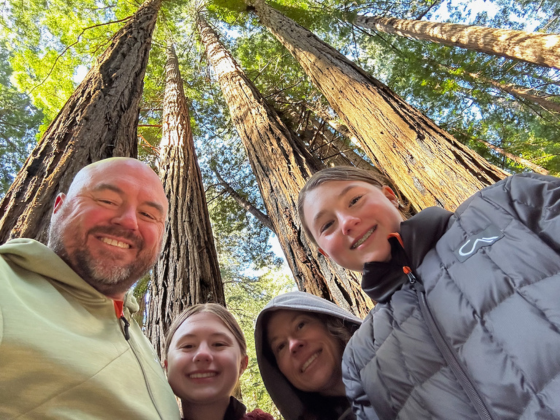Streaming services have fundamentally changed how we watch movies, TV shows, and even listen to music. Gone are the days of waiting for a specific air time or flipping through channels—now, entertainment is available on demand, at our fingertips, whenever we want it. While this shift has brought unparalleled convenience and an explosion of content choices, it has also introduced new concerns, particularly regarding binge-watching habits and the role of recommendation algorithms that can shape and even limit our media consumption.
The rise of streaming services has led to a significant shift in how consumers access television content, with many opting to “cut the cord” by canceling traditional cable or satellite TV subscriptions. In 2019, there were approximately 84 million pay TV households in the U.S., but by 2023, this number had declined to about 58 million.This trend is expected to continue, with projections indicating that by 2026, there will be over 80 million cord-cutting households in the U.S.
The primary drivers behind this movement include the flexibility of on-demand viewing, cost savings, and the diverse content libraries offered by streaming platforms. As of 2023, approximately 83% of U.S. households subscribe to at least one streaming video-on-demand service, reflecting a significant increase from 52% in 2015.
Notably, a survey found that 86% of individuals who have cut the cord are satisfied with their decision, underscoring the appeal and effectiveness of streaming services in meeting modern viewing preferences.
Binge-Watching and the On-Demand Revolution
One of the most defining features of the streaming era is binge-watching. With entire seasons of shows released at once, audiences no longer have to wait week-to-week for the next episode. This shift has had a profound impact on storytelling, audience engagement, and even mental health.
-
Instant Gratification vs. Traditional Viewing: Streaming allows viewers to devour entire seasons in a single weekend, leading to deeper engagement but also reducing the anticipation that once fueled conversations around weekly releases.
-
Cultural Shifts in Viewing Habits: Shows that might have taken months to gain traction in the past can now become viral sensations overnight. However, this rapid consumption also means content cycles move quickly, with even the biggest hits being forgotten as soon as the next trend emerges.
-
Psychological Effects of Binge-Watching: Studies suggest that prolonged binge-watching can lead to sleep deprivation, reduced social interaction, and even increased anxiety or depression. The dopamine-driven reward system of watching "just one more episode" can make it difficult for audiences to step away.
Algorithm-Driven Recommendations: The Echo Chamber Effect
While streaming platforms promise to deliver content tailored to user preferences, their recommendation algorithms can inadvertently create echo chambers—reinforcing existing tastes and limiting exposure to new genres, voices, and creative storytelling.
-
How Algorithms Work: Platforms like Netflix, Hulu, and Prime analyze your watch history, ratings, and engagement to suggest content they think you'll like. While this personalization improves user experience, it also narrows the scope of recommendations. (Does this sound familiar?)
-
The Risk of a Filter Bubble: If a user primarily watches crime dramas, they may rarely be exposed to critically acclaimed documentaries, foreign films, or independent productions. This can lead to a homogenized viewing experience where audiences miss out on fresh perspectives.
-
Impact on Content Discovery: In the pre-streaming era, traditional TV networks, video rental stores, and even physical browsing at a bookstore allowed for organic discovery. Now, viewers rely heavily on algorithm-driven suggestions, making it harder for lesser-known content to break through.
Remember Wandering Blockbuster for an hour on Friday night?
On the other hand, these recommendation systems help users navigate an overwhelming volume of content and ensure that they find programming that aligns with their tastes quickly. Without algorithmic curation, viewers might struggle to sift through thousands of options, leading to choice paralysis. In many cases, these systems introduce users to content they may have never discovered on their own, broadening their entertainment experience rather than restricting it.
Finding Balance: How to Broaden Your Streaming Experience
While streaming services make entertainment more accessible than ever, it's important for viewers to be aware of the ways algorithms shape their consumption. Here are some ways to break out of the echo chamber and take control of your media diet:
-
Actively Explore New Categories: Instead of relying on recommendations, manually search for content outside your usual preferences—whether it's an international series, a classic film, or a niche documentary.
-
Follow Curated Lists & Human Recommendations: Seek out suggestions from critics, friends, or curated playlists on platforms like Letterboxd or IMDB to expand your watchlist.
-
Limit Binge-Watching Sessions: Setting viewing boundaries (like watching only a couple of episodes at a time) can enhance the enjoyment of storytelling and help prevent burnout.
The Future of Streaming and Media Consumption
Streaming services continue to evolve, integrating live sports, interactive content, and hybrid release models that blend binge-worthy drops with traditional weekly episode schedules. As platforms refine their algorithms and expand their libraries, the challenge for audiences will be to strike a balance—embracing the convenience of streaming while staying mindful of the potential limitations it imposes on content discovery.
In the end, streaming has made media consumption easier and more personalized than ever before, but understanding its influence can help viewers make more intentional choices about what they watch. The power to break out of the algorithmic bubble—and truly explore the vast world of content—ultimately lies in the hands of the audience.


















